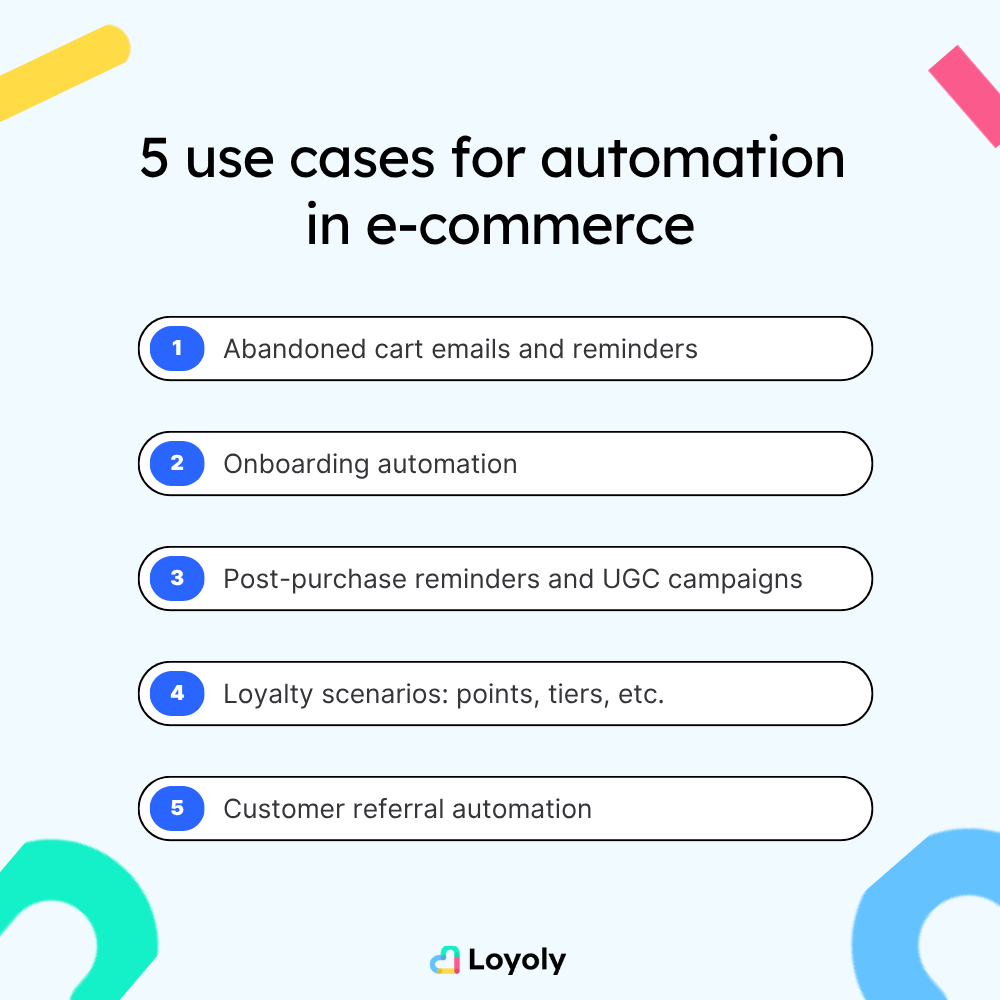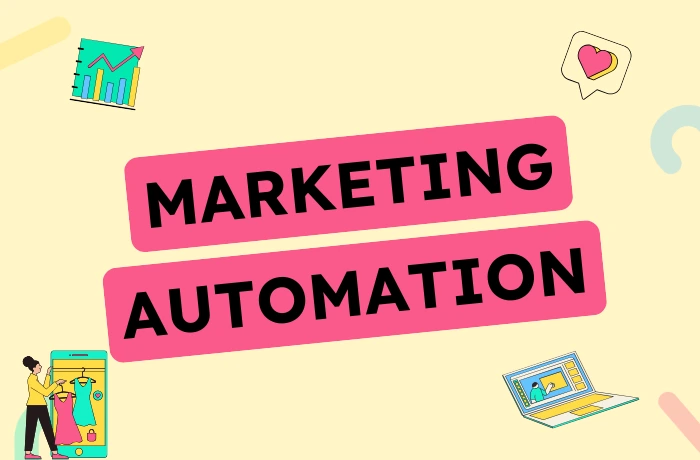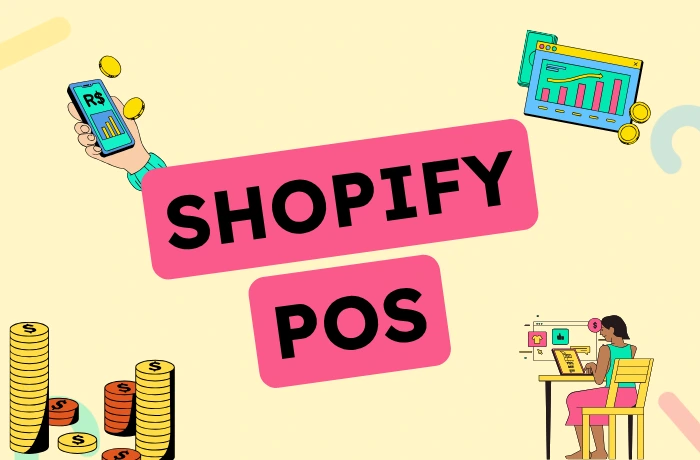The promises of e-commerce automation include time savings, personalized messages, intelligent scenarios, and more. It's the new magic wand.
But be careful, a wand must be wielded with care. If used incorrectly, automation can quickly become a trap.
Poor targeting, poorly timed mailings, robotic content...
And in the end? A deteriorating customer experience, a disengaged customer base, and stagnant performance.
That's why it's essential to master automation. Not to automate everything, but to design journeys that allow for controlled personalization.
Understanding e-commerce automation means understanding what it can do for you... but also what it should never do for you. (at least for now).
Quickly define marketing automation for e-commerce
Marketing automation is the automation of marketing actions without human intervention.
In e-commerce, it's even more specific: it involves triggering targeted actions based on a customer's behavior.
For example, an automatic email after a shopping cart is abandoned, a special offer for an inactive customer, or a loyalty reward sent at just the right moment.
Traditional automation is often aimed at leads or followers.
In e-commerce, we're talking about real buyers with concrete purchasing journeys, order histories, and clear intentions.
That's what makes e-commerce automation so interesting.
What is the purpose of automation?
Automation is not intended to replace humans. It is there to optimize what your teams already do and save them valuable time.
You allow them to focus more on more complex, intellectual tasks by setting aside repetitive, time-consuming, and low-value-added tasks.
The goal is also to act faster, reduce errors, and standardize efficient processes.
The bottom line is that your business is more fluid, more responsive, and smarter.
However, be careful of certain pitfalls that can damage your brand identity.
We'll look at these later in the article.
Why is this important for eCommerce? 6 benefits
With acquisition costs rising and customers expecting personalized experiences, eCommerce automation is becoming an essential growth driver.
Here are 6 benefits of automation in eCommerce
Personalization
Each message is tailored to the customer's behavior, profile, or purchase history.
As a result, you have more relevant, more engaging communication and a real customer retention tool.
Time savings
No more manual reminders or generic newsletters.
You create scenarios once, and they run continuously.
Your teams (or you) can focus on tasks with higher added value.
Reduction in human error
A forgotten reminder or poor segmentation can be costly.
Automation makes your actions more reliable, without relying on human intervention at every stage.
The best ROI for campaigns
Automated campaigns are better targeted, faster to deploy and often generate a lower cost per conversion.
This ties in with the time savings, because time is money.
Real-time monitoring and analysis
You can closely monitor the performance of your scenarios.
Opens, clicks, conversions : everything is measurable and continuously improvable.
Scalability of operations
Is your business growing? No need to hire more staff to keep up.
Your automated workflows adapt to your growth.
5 use cases for automation in e-commerce
Automation makes a lot of things possible, as we've just seen.
It saves time, allows for personalization, and more.
Now let's look at five use cases to boost your performance.
Let's go!

Abandoned cart emails and automatic reminders
A classic... that remains incredibly effective. As soon as a cart is abandoned, an email is automatically sent.
The more personalized it is (products viewed, customer name, cart value), the more it converts.
It's simple: you recover sales without lifting a finger.
You can extend the use of emails with welcome emails, for example.
Automation around onboarding
Thanks to automation, you can script each step: welcome email, product tutorial, thank you offer, or personalized recommendation.
Customers take action quickly... and come back more easily because they are familiar with your product or service.
Automation can help you build knowledge and recognition.
Post-purchase reviews and UGC campaigns
Your interest is that a customer's purchase is not a one-way trip.
In other words, don't let a customer leave after their first purchase!
An automatic reminder to leave a review, post a photo, or tag your brand generates authentic content... and builds trust.
This strengthens your social proof, customer experience, and loyalty.
You can check out our loyalty programs, which include all of the features mentioned above.
Loyalty scenarios: points, tiers, rewards
When a customer reaches a certain level, they automatically receive a reward.
When they accumulate enough points, they are notified immediately.
This type of scenario effortlessly maintains engagement while rewarding each step of the journey.
And the more a customer feels recognized, the more they stay.
Loyoly programs also include this reward tier feature.
Customer referral automation
A good referral program works if it's simple... and automated.
By automatically generating unique codes, tracking conversions, and sending rewards without delay, you create a smooth, engaging, and above all scalable mechanism.
Word of mouth becomes a real growth lever.
Pssst... You might find this interesting!
Loyalty programs are strategic for your brand, and we can probably help. Check out our platform!
How to choose the right automation tools for your online store?
All tools promise smooth journeys, campaigns that run themselves, and instant growth.
But in reality, choosing the wrong tool can slow down your teams, complicate your stack... and cause you to miss your goals.
A good tool isn't chosen based on a brilliant demo, but on its ability to adapt to your e-commerce reality.

Key criteria to evaluate before choosing a tool
Your automation tool shouldn't operate in a silo. It should integrate naturally with your CMS, CRM, emailing solution, payment platform, etc.
Also consider the interface. If your teams have to call a consultant to create a follow-up scenario, it's too complex.
The tool must be clear, intuitive, and flexible.
Finally, check the quality of support.
When automation manages part of your customer relationship, an unresolved error can quickly become a business problem.
The availability of resources can also be a real plus for easy training.
All-in-one tool vs. specialized tool
All-in-one platforms often cover a wide range of needs: email, segmentation, CRM, reporting.
This is convenient, but not always optimal.
Conversely, a specialized tool like Loyoly, designed to manage loyalty and referrals, goes further on these specific issues.
Better personalization, more refined mechanics, tailored KPIs, everything is designed to maximize the impact on your retention rate.
It's better to have a tool that does a few things very well than a solution that does everything... without excelling anywhere.
Interoperability: the key to a high-performance e-commerce ecosystem
So if you choose specialized tools, they must be able to communicate with the rest of your ecosystem: CRM, e-commerce platform, customer review tool, payment system.
Why? To centralize data, better segment your customers, and trigger truly personalized actions.
It is this smooth flow of information that enables you to activate the right levers at the right time.
Which KPIs should you track to measure your automation strategy?
The right KPIs enable you to adjust your scenarios, optimize your mailings, and prove the ROI of your actions.
Here are the ones you should not overlook.
The open rate (of an email) and click-through rate remain the first indicators to monitor.
They give you a clear idea of the interest and relevance of your automated messages.
Next comes the conversion rate.
For example, how many abandoned carts are actually converted thanks to your automatic reminders?
This is where automation proves its value.
The repeat purchase rate and customer lifecycle duration are also essential.
The goal is not just to sell once, but to keep customers coming back for as long as possible.
Finally, if you have an automated loyalty program in place, closely monitor participation, rewards distributed, and the overall ROI of the program.
This is often what makes the difference between a one-time customer and a loyal customer.
👉 Want to go further? Here are the eCommerce KPIs to watch closely to drive your growth.
4 tips for integrating automation into eCommerce
Here are our bonus tips on what to keep in mind to ensure your strategy remains effective.
Don't underestimate implementation
A well-chosen automation tool is not enough.
It takes time to set it up, create the right scenarios, and connect the data.
Anticipate the resources you'll need.
Keep a human check behind every action
Even when automated, a message can contain an error.
Check your content, segments, and triggers.
A good strategy always relies on a minimum of control.
Understand automated processes
Don't let the tool run without understanding what it does.
Analyze the journey, follow the steps, and adjust if necessary.
Transparency is key to effective management.
Maintain human or personalized points of contact
Not everything can (or should) be automated.
A personalized message or human intervention at the right time often makes all the difference.
E-commerce automation for your loyalty program Loyoly
Automating customer loyalty is possible.
It's even essential for creating an effective long-term program.
With Loyoly, every interaction can trigger a reward after a purchase, a milestone reached, or an incentive to refer a friend.
Everything happens in the background, without any friction for your teams... and with a real impact on customer engagement.
Even referrals become an automated lever.
As soon as a referred customer places an order, a reward is awarded to the referrer, a message is sent, and the loop is restarted.
Here's how to use automation after a referral to increase your sales effortlessly.
Want to see how it works?
Try the Loyoly demo and discover everything you can automate to improve customer loyalty.
Go beyond e-commerce
Automation doesn't stop at your online store.
It can also be applied to your customer service, logistics, billing, or HR campaigns.
More and more companies are outsourcing the implementation of these automations to specialized service providers.
It's possible, effective, and often faster than building everything in-house.
But be careful, even if you delegate, it's still essential to have a minimum of in-house knowledge about the field.
Understand the scenarios that have been set up, know what triggers them, measure what they bring in...
vOtherwise, you risk automating everything and anything without any control, even tasks that are not worth it.
Automation is not just a technical tool, it is a strategic approach.
And the more visibility you have internally, the more you will be able to gain a real competitive advantage, whether in your e-commerce business or beyond.

.png)









.png)
.png)
.png)
.png)
.png)